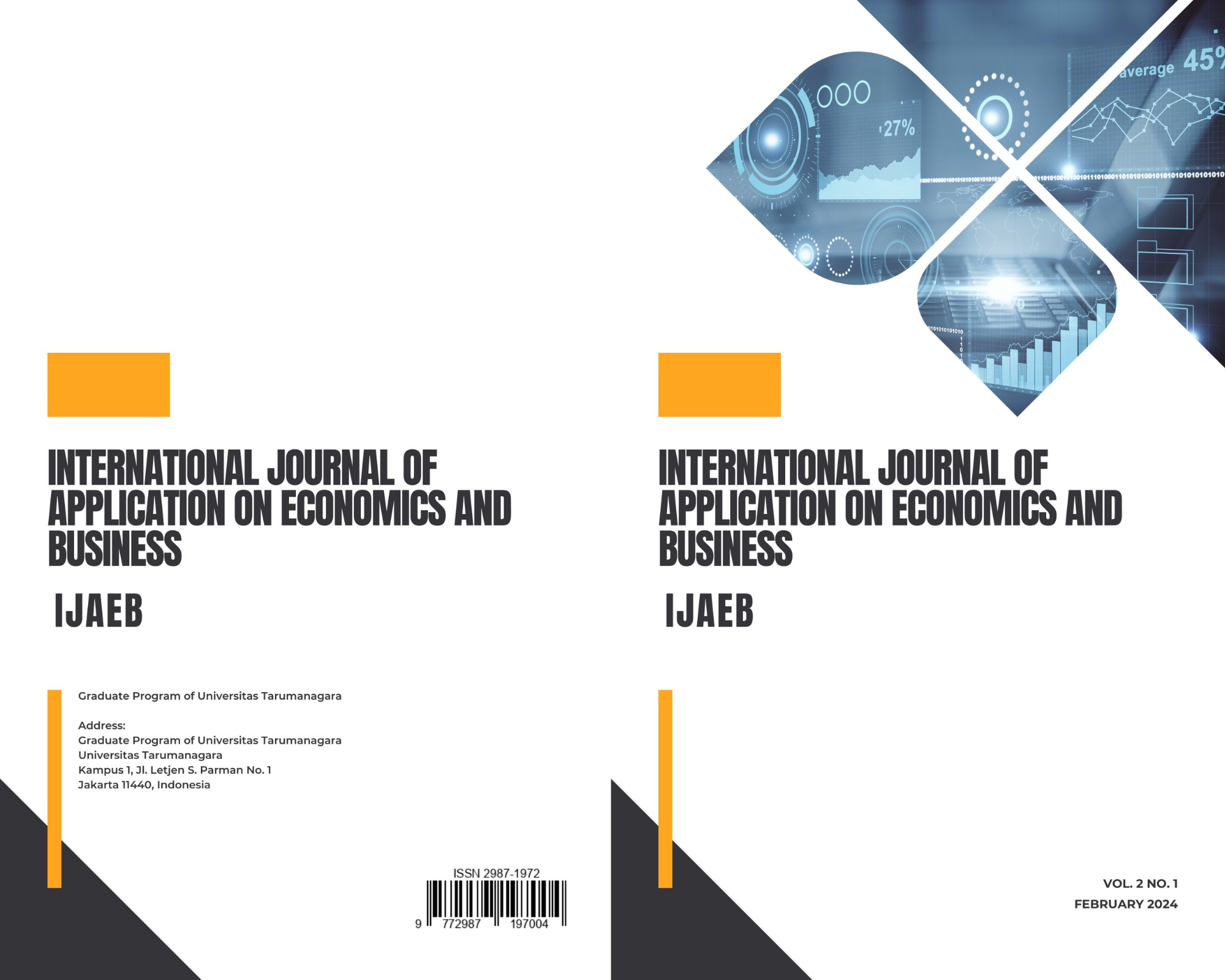FINANCIAL LITERACY, RISK PERCEPTION, MATERIALISM AND PROPENSITY TO INDEBTEDNESS
Main Article Content
Abstract
The purpose of this paper is to study the influence of financial literacy, risk perception and materialism on propensity to indebtedness. The number of samples in this study was 200 respondents who were credit card users who already had income in the Jakarta area. For data analysis, this study used Structural Equation Modelling (SEM). The result of this study indicated that Financial Literacy and Risk Perception has a negative effect on Propensity to Indebtedness, while Materialism has a positive effect on Propensity to Indebtedness.
Article Details

This work is licensed under a Creative Commons Attribution-NonCommercial-ShareAlike 4.0 International License.
This journal provides immediate open access to its content on the principle that making research freely available to the public supports a greater global exchange of knowledge.
IJAEB by Graduate Program of Universitas Tarumanagara is licensed under a Creative Commons Attribution-NonCommercial-ShareAlike 4.0 International License.. Permissions beyond the scope of this license may be available at https://journal.untar.ac.id/index.php/ijaeb
References
Azma, N., Rahman, M., Adeyemi, A. A. & Rahman, M. K. (2019). Propensity toward indebtedness: evidence from Malaysia. Review of Behavioral Finance, 11(2), 188–200.
Belk, R. W. (1985). Materialism: trait aspects of living in the material world. Journal of Consumer Research, 12, 265-280.
Bisnis.com. (2023, August 22). Transaksi Kartu Kredit Bergeliat, Tumbuh 26,53 Persen Pada Semester I/2023. https://finansial.bisnis.com/read/20230822/90/1686945/transaksi-kartu-kredit-bergeliat-tumbuh-2653-persen-pada-semester-i2023.
Davies, E. & Lea, S. E. G. (1995). Student attitudes to student debt. Journal of Economic Psychology, 16(4), 663–679.
Doosti, B. A. & Karampour, A. (2017). The impact of behavioral factors on propensity toward indebtedness case study: indebted customers of Maskan Bank, Tehran province (geographic regions: east). Journal of Advances in Computer Engineering and Technology, 3(3), 145–152.
Erdem, C. (2008). Factors affecting the probability of credit card default and the intention of card use in Turkey. International Research Journal of Finance and Economics, 18, 159-171.
Flores, S. A. M. & Bidarte, M. V. D. (2019). Style consumption and propensity to indebtedness: evidence on the peace border. Revista de Administração Da Universidade Federal de Santa Maria, 12(1), 142–158.
Flores, S. A. M. & Vieira, K. M. (2014). Propensity toward indebtedness: an analysis using behavioral factors. Journal of Behavioral and Experimental Finance, 3, 1–10.
Kasser, T. (2002). The high price of materialism. London: MIT Press.
Livingstone, S. M. & Lunt, P. K. (1992). Predicting personal debt and debt repayment: psychological, social and economic determinants. Journal of Economic Psychology, 13(1), 111–134.
Lusardi, A. & Tufano, P. (2008). Debt literacy, financial experiences, and overindebtedness. Dartmouth Working Paper.
Mandell, L. (2007). Financial literacy of high school students. In J.J. Xiao (Ed.), Handbook of Consumer Finance Research, Springer, New York, 163-183.
Mitta, D. & Pamungkas, A. S. (2022). Pengaruh financial literacy, materialism, risk perception, dan money value terhadap propensity to indebtedness. Jurnal Manajerial dan Kewirausahaan, 4(2), 339–347.
Patulak, L. E., Sarita, B. & Hamid, W. (2020). Pengaruh emosi, materialisme, literasi keuangan, persepsi risiko dan pengalaman keuangan terhadap propensity to indebtedness (studi pada nasabah kredit plus Kendari). Jurnal Manajemen, Bisnis dan Organisasi (JUMBO), 4(3), 31–42.
Potrich, A. C. G. & Vieira, K. M. (2018). Demystifying financial literacy: a behavioral perspective analysis. Management Research Review, 41(9), 1047–1068.
Prashella, D. A. & Leon, F. M. (2020). Financial literacy in millenials generation in Indonesia. Advances in Economics, Business and Management Research, 151, 322–325.
President’s Advisory Council on Financial Literacy (PACFL) (2008). 2008 Annual Report to the President. http://www.treas.gov/offices/domestic-finance/financialinstitution/fineducation/council/index.shtml.
Ricciardi, V. (2004). A Risk Perception Primer: A Narrative Research Review of the Risk Perception Literature in Behavioral Accounting and Behavioral Finance. Golden Gate University.
Richins, M. L. & Dawson, S. (1992). A consumer values orientation for materialism and its measurement: scale development and validation. Journal of Consumer Research, 19(3), 303-316.
Rosadi, D. S. & Andriani, I. (2023). Hubungan impulsive buying dengan perilaku berhutang pada pengguna pinjaman online. JIMPS: Jurnal Ilmiah Mahasiswa Pendidikan Sejarah, 8(4), 3655–3664.
Selvaraja, M. & Abdullah, A. (2019). Psychological factors effects on propensity towards indebtedness by applying the behavioural economic theory: evidence in Malaysia. International Journal of Recent Technology and Engineering (IJRTE), 8(4), 11824–11830.
Sitkin, S. B. & Weingart, L. R. (1995). Determinants of risky decision-making behavior: a test of the mediating role of risk perceptions and propensity. Academy of Management Journal, 38(6), 1573-1592.
Ting, S. (2017). The difference between gratitude and indebtedness. American International Journal of Contemporary Research, 7(4), 55-62.
Wahono, H. K. & Pertiwi, D. (2020). Pengaruh financial literacy, materialism, compulsive buying terhadap propensity to indebtedness. International Journal of Financial and Investment Studies (IJFIS), 1(1), 1–14.



